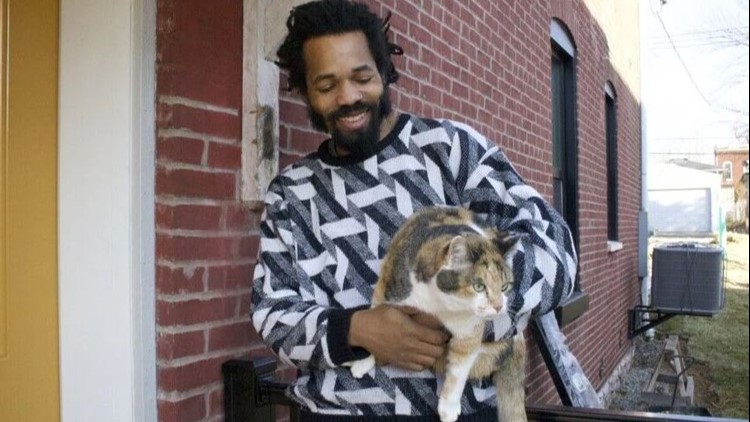Kaveh Razani, director of operations at Art Place Initiative, said API’s definition of an artist is someone who considers themselves one; the application process is open to creatives of all mediums including fine art, performance, functional art (jewelry, furniture), imaginative works (film, video, digital, etc.), and cultural practice(designers, technicians, tattoo artists, chefs, etc.).
Established in 2019 by the Kranzberg Arts Foundation, The Incarnate Word Foundation, and the Regional Arts Commission, St. Louis Art Place Initiative (API)’s mission is to shift that narrative through homeownership by generating wealth and equity for low-to-moderate income creatives.
With a goal to develop 20 units of affordable housing and community green spaces, API secured 25 parcels in the Gravois Park neighborhood. A press release said the properties will include rehabs and new construction available for purchase to local artists.
The release also said previously vacant homes located at 3728 and 3729 Oregon Avenue are the first home renovations. The next construction phase is followed by newly constructed homes located at 3717 and 3719 Oregon Avenue. Over the course of three years, 20 units will be completed.
“This project represents API’s and our founding organizations’ commitment to building the infrastructure needed for local artists to thrive in St. Louis for years to come,” Chris Hansen, executive director of the Kranzberg Arts Foundation, said. “The impetus for this project came directly out of the Gravois-Jefferson Historic Neighborhoods Plan, which included providing affordable housing for artists. We’re excited to help carry out that vision in this collaborative effort.”
In its first phase of development, API has finished its first home, which was sold and now belongs to Stan Chisolm, an art teacher at Kairos Academies and multidisciplinary artist.
Chisholm said he’s thrilled to be the first house recipient.
“It’s amazing to have all my hard work over the years pay off,” he said. “It feels surreal to have this be a reality and be here to represent leading the way with it.”
Razani said the second house is currently in construction. Once spring comes, development for houses three, four, five, and six will begin simultaneously. He said a total of five houses will be completed in 2022.
“Our total footprint is 20 units of single family for-sale housing,” Razani said. “Their interior designs will be relatively similar. We are designing everything from two bedroom, two bath to four bedroom, two bath to accommodate different family sizes. We want to make sure there’s diversity in unit sizes.”
In addition to the units, Razani said the project includes public space, green space, and commercial space.
“We’re excited about developing in collaboration with the neighborhood, and with that partnership, we’re helping facilitate a community land trust,” he said. “The land trust is a communal body of residents, stakeholders, and neighbors that will collectively hold ownership over land and maintain options to purchase back the homes from the artists.”
Razani said there is a deep restriction in places that gives API and the community land trust the option to purchase a home from an artist to give to the next artist.
“The home will stay in the program,” he said. “If an artist chooses to live in that home for the rest of their life, they can. However, if they choose to sell it at any point, they will sell it to another artist through the community land trust and API. We want those homes to remain affordable housing for artists in that neighborhood.”
Razani said API builds and rehab houses in Gravois Park is because it chose them more than they chose it
“In 2017, there was a community planning process that occurred called the Gravois-Jefferson Historic Neighborhood Plan, and it essentially encompassed all the neighborhoods between Jefferson and Grand on the east and west; Gravois on the north and Meramec on the south,” Razani said. “It includes mostly Benton Park West, Gravois Park, and parts of Dutchtown. The goal of that community plan is facilitated by Dutchtown South Community Corporation and its purpose was to create a document outlining how the neighborhood wanted to develop and grow in the coming years.”
Razani said the 350-page plan, which includes input from residents, neighbors, business owners, and former residents, also has an arts and culture section with a call-to-action for affordable for-sale housing for artists.
“Our neighbors care deeply about the future of our community. Gravois Park is home to a very high concentration of artists within the St. Louis region artists who are also neighbors, committed and engaged in bettering their own community,” Amanda Colon-Smith, executive director, Dutchtown South Community Corporation, said. “This project opens a door for artists connected to the neighborhood to access homeownership and continued stewardship of their community.”
Low-to-moderate income artists are selected through an application and screening process based on specific guidelines determined from a racial equity lens, calculated policies to foster fair housing practices and a confirmed connection to the Gravois Park Community.
Architect Karl Grice of Grice Group Architects is the lead designer for all of the rehabbed houses. Habitat for Humanity St. Louis serves as the general contractor for all properties and is the designer on new construction projects.
API also has a partnership with Dream Builders 4 Equity (DB4E), a local nonprofit organization that assists youth in co-developing homes to gain developer experience.
For more information, visit stlartplace.org.


